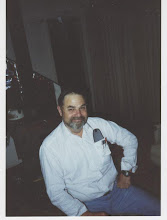Bonnet on the Tevis Cup Ride
Shortly after this romantic interlude Bonnet moved to new quarters in Sunland and for us life went on. The next thing we heard, Lona had taken it into her head to ride Bonnet on the Western States 100. She conditioned him and trained him. I thought it was madness, but nobody ever asked me. (Nobody ever asks me.) She and the pony showed up, both of them in great condition because they had been working in the rugged San Gabriel Mountains of Southern California.
The trail ride board of directors had stipulated that each horse had to carry 150 pounds of weight. Lona and her saddle weighed 130 pounds, but nobody cut them any slack. If Bonnet was going to play with the real horses, he was going to have to abide by Real Horse Rules. So he was fitted out with lead weights for his saddle.
I was concerned because much of the Western States ride is made at the trot. You’ve seen people riding English saddles where they bounce up and down while their horse trots. It’s called “posting.” It’s a way of equalizing the load and making things a little easier for the horse. People riding Western saddles don’t post. Instead, they put their weight from side to side as the horse progresses, counterbalancing the motion. It also equalizes the load. But both riding methods have something in common. The rider looks like he’s going to fall off any second.
Many people were concerned about Bonnet. Compared with the trail horses, even the relatively small Arabs, Bonnet looked like a Yorkshire Terrier running with Great Danes. But he was in such great physical condition that a hundred-mile trot only made him horny. He propositioned every mare he could identify along the way, and maybe a few geldings, too. When you’re young, you’re not particular.
The ride ends at the Auburn District Fair Grounds. At 6:00 a.m. certain vets conduct a quick post-ride survey of the animals. bIf they find some horse massively dehydrated, for example, they can do something quickly. Since Joanne was the vet secretary, she had to get up early to make the 6:00 a.m. call with them. She told me that Bonnet was still propositioning the mares. One of the vets commented, “That’s a damn tough pony.” “Damn tough” is a technical term used among veterinarians.
Bonnet lived into his middle twenties. He pulled carts, appeared in parades, and was Lona’s friend and companion during all that time. Several times he won the NTRA (National Trail Riding Association) national open championship.
When he died, Lona sent us an edged-in-black note saying she had lost her friend. And we mourned with her. He was one of the planet’s good guys.
Subscribe to:
Post Comments (Atom)

No comments:
Post a Comment